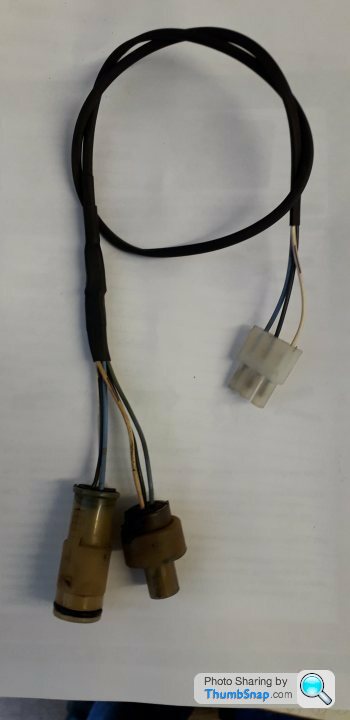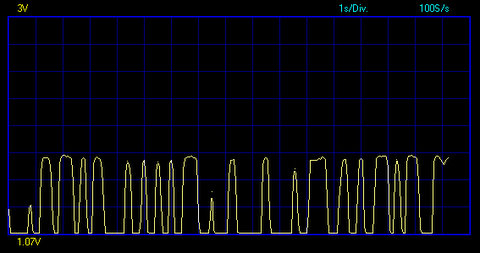Chimaera misfiring with new lambda sensors
Discussion
I fitted new spark plugs, leads and lambda sensors because everything was sooty and it's been using more petrol than normal, but then it started misfiring. After going through the elimination process, it turns out the new lambda sensors were the culprit. Do you have to set up the ECU?
Any help would be appreciated.
Any help would be appreciated.
jubags said:
I fitted new spark plugs, leads and lambda sensors because everything was sooty and it's been using more petrol than normal, but then it started misfiring. After going through the elimination process, it turns out the new lambda sensors were the culprit. Do you have to set up the ECU?
Any help would be appreciated.
No, but you do have to get the right type of sensors. Are you sure you've got Titania sensors ERR6729 rather than the more common Zirconia sensors?Any help would be appreciated.
GreenV8S said:
No, but you do have to get the right type of sensors. Are you sure you've got Titania sensors ERR6729 rather than the more common Zirconia sensors?
Also make sure that you have connected the correct cable to each sensor; if you swap the connections, you'll end up with one bank fully rich and the other fully lean.jubags said:
The original sensors are Sagem 7336513. The new ones are FAE 77358,1 marked Y25-3BB, and the other Y25-2FE with the TVR parts Ltd number M0157.
I'll get back in touch with them tomorrow.
Thanks for your help.
Google says that FAE part number corresponds to ERR6729, so they are probably the correct part.I'll get back in touch with them tomorrow.
Thanks for your help.
GreenV8S said:
GreenV8S said:
No, but you do have to get the right type of sensors. Are you sure you've got Titania sensors ERR6729 rather than the more common Zirconia sensors?
Also make sure that you have connected the correct cable to each sensor; if you swap the connections, you'll end up with one bank fully rich and the other fully lean.The ECU does have to learn the fuel trim values if the ECU has been reset at any time. This can be done by letting the car idle for 2.5 minutes when hot. What did you do to find out the probes where faulty? There is not much to go wrong as long as they have a good 12v on the heater wire (red on the probe). The white wire is earth and the black output. If you put a test meter on the black / white wires you should see a 0 to about 1.2 volts switching signal about 3/4 second intervals at 1000 rpm. If its 0 volts its ether very lean, no heater voltage or faulty probe. If its stuck at over 1.2 volts its running very rich. I dont think a faulty probe would do this.
I tested the original sensors by using a multimeter and a blow torch. I connected the positive lead to the black sensor wire and grounded the other onto the sensor body. I heated the sensor and there was no reading on the first, and a reading of only 0.075v on the second, hence why I bought new ones. When I had the misfiring problems, I then decided to check the new ones and could not get a reading on either. I find it hard to believe 2 new sensors can be faulty. Am I doing something wrong? How do you connect a multimeter to the wires if sensors are on the car when they're hidden in the connection block?
jubags said:
I tested the original sensors by using a multimeter and a blow torch. I connected the positive lead to the black sensor wire and grounded the other onto the sensor body. I heated the sensor and there was no reading on the first, and a reading of only 0.075v on the second, hence why I bought new ones. When I had the misfiring problems, I then decided to check the new ones and could not get a reading on either. I find it hard to believe 2 new sensors can be faulty. Am I doing something wrong? How do you connect a multimeter to the wires if sensors are on the car when they're hidden in the connection block?
Why do you think that would work? You need a difference between the outside of the probe ( free atmosphere) and probe tip in oxygen levels plus you need a heater supply to provide the resistive probe with a voltage.. A rich mixture gives low oxygen, so the probe voltage goes up ( resistance down). In your case the oxygen levels will be the same on both sides, so the resistance is high, and 0 volt output. Nothing wrong with your probes, you should test them in the car for the voltage output.Edited by blitzracing on Saturday 12th September 17:55
jubags said:
I'll be asking PH members if they've got a wiring harness going spare so I can make up a test lead.
Get some back probes. These are fine metal probes that are small enough to push into the back of the connector between the terminal and housing so that you can make contact without damaging the wire insulation or breaking the circuit.Before using them, make sure you understand the electrical characteristics of the thing you are trying to measure.
The high quality NTK sensor is no longer available. There are a few genuine ntk ones still in stock at some retailers but prices are high .. one tvr place is asking nearly 400 pounds a pair,while stocks last.
There's lots of none genuine sensors around (which are often sold by tvr places too). Some of them claim to be NTK, or genuine OE. they aren't.
If you want NTK you will have to pay handsomely for them, if you want cheap copies ebay is flooded with them.
There's lots of none genuine sensors around (which are often sold by tvr places too). Some of them claim to be NTK, or genuine OE. they aren't.
If you want NTK you will have to pay handsomely for them, if you want cheap copies ebay is flooded with them.
Gassing Station | General TVR Stuff & Gossip | Top of Page | What's New | My Stuff





